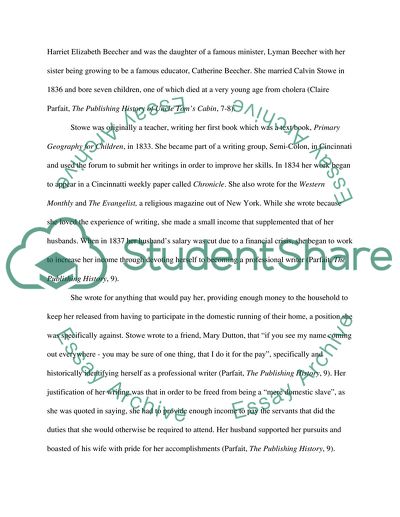Cite this document
(“Stowe about the Horrors of Slavery and the American Civil War Research Paper - 1”, n.d.)
Stowe about the Horrors of Slavery and the American Civil War Research Paper - 1. Retrieved from https://studentshare.org/literature/1749121-choose-one-of-the-19th-century-historical-figures-of-the-american-civil-war
Stowe about the Horrors of Slavery and the American Civil War Research Paper - 1. Retrieved from https://studentshare.org/literature/1749121-choose-one-of-the-19th-century-historical-figures-of-the-american-civil-war
(Stowe about the Horrors of Slavery and the American Civil War Research Paper - 1)
Stowe about the Horrors of Slavery and the American Civil War Research Paper - 1. https://studentshare.org/literature/1749121-choose-one-of-the-19th-century-historical-figures-of-the-american-civil-war.
Stowe about the Horrors of Slavery and the American Civil War Research Paper - 1. https://studentshare.org/literature/1749121-choose-one-of-the-19th-century-historical-figures-of-the-american-civil-war.
“Stowe about the Horrors of Slavery and the American Civil War Research Paper - 1”, n.d. https://studentshare.org/literature/1749121-choose-one-of-the-19th-century-historical-figures-of-the-american-civil-war.


